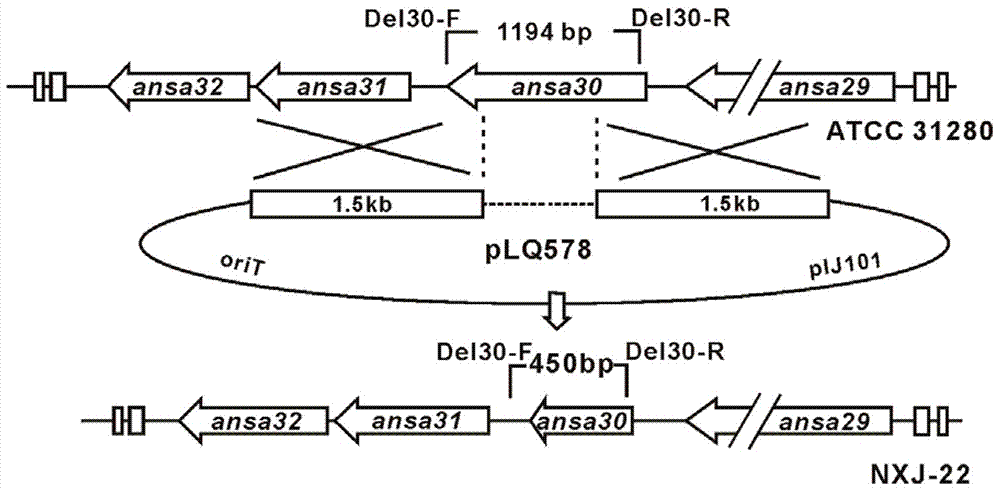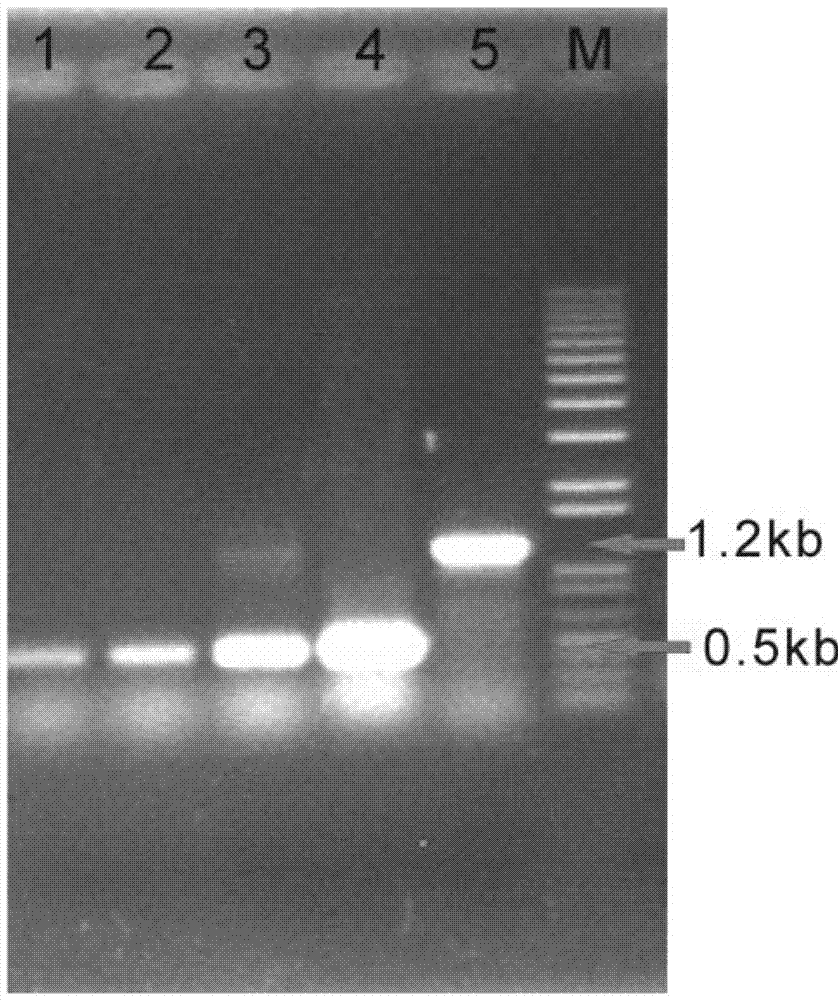Deleted high-yield ansamitocin strain and preparation method thereof
A technology of ansamitocin and high-yield strains, applied in the direction of microorganism-based methods, biochemical equipment and methods, enzymes, etc., can solve the problems of formation affecting the yield of target products, etc.
- Summary
- Abstract
- Description
- Claims
- Application Information
AI Technical Summary
Problems solved by technology
Method used
Image
Examples
Embodiment 1
[0033] This example is the specific process of preparing the mutant strain NXJ-22 with the interruption and deletion of gene ansa30. Specifically include the following steps:
[0034] Step 1), construct plasmid pLQ578: use the genomic DNA of Actinomyces fasciatus ATCC31280 as a template, and use two sets of primers DEL30-LF / DEL30-LR and DEL30-RF / DEL30-RR to obtain ansa30 interrupted region by PCR amplification The homology arm of 1440bp on the left and the homology arm of 1465bp on the right were confirmed by gene sequencing. Insert a 1440bp PCR fragment (SpeI / EcoRI) from the left side of the interrupted region and a 1465bp PCR fragment (EcoRI / HindIII) on the right side of the interrupted region into the SpeI / HindIII site of plasmid pJTU1278. The plasmid pLQ578 for the inactivation of ansa30 gene was obtained, and the restriction enzyme digestion verification showed that the plasmid was constructed correctly.
[0035] *Step 1) PCR system and conditions used in the preparation of ...
Embodiment 2
[0052] The present example is the fermentation process of ansa30 interrupting the biosynthesis of ansamicin by the deleted mutant strain. Specifically, it includes the following steps: coating the mutant strain (NXJ-22) on solid YMG medium for activation, after culturing at 30°C for 2 days, picking a small amount of mycelium to inoculate the primary seed medium, and culturing at 30°C 220r / min for 24h; Transfer 4% of the inoculum to the secondary seed culture medium, culture at 30℃ 220r / min for 24h; transfer to the fermentation medium for fermentation according to the 10% inoculum volume, collect the fermentation broth for extraction after 7 days, and use Agilent The Agilent 1200 series performs HPLC analysis on the extracted compounds. Among them, the mobile phase of HPLC is methanol and aqueous solution.
[0053] Table 1 Composition of seed medium and fermentation medium
[0054]
[0055] image 3 The ansa30 gene deletion strain NXJ-22 and wild-type strain ATCC31280 ansamicin f...
PUM
 Login to View More
Login to View More Abstract
Description
Claims
Application Information
 Login to View More
Login to View More - R&D
- Intellectual Property
- Life Sciences
- Materials
- Tech Scout
- Unparalleled Data Quality
- Higher Quality Content
- 60% Fewer Hallucinations
Browse by: Latest US Patents, China's latest patents, Technical Efficacy Thesaurus, Application Domain, Technology Topic, Popular Technical Reports.
© 2025 PatSnap. All rights reserved.Legal|Privacy policy|Modern Slavery Act Transparency Statement|Sitemap|About US| Contact US: help@patsnap.com



